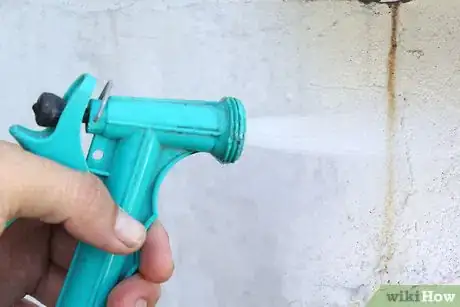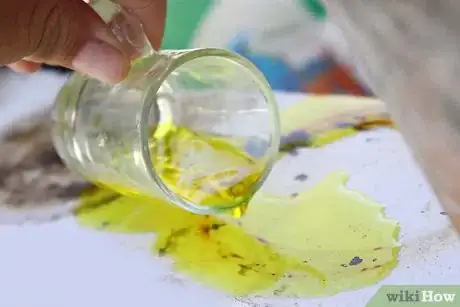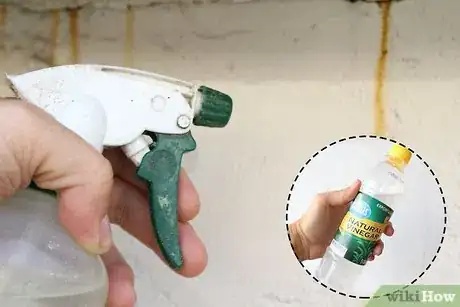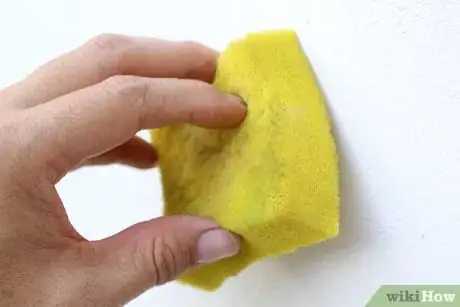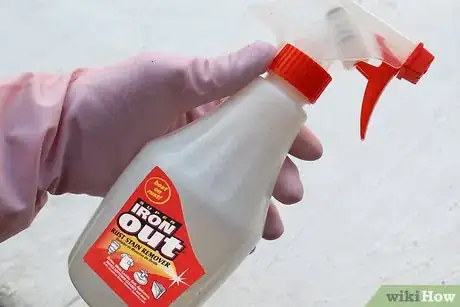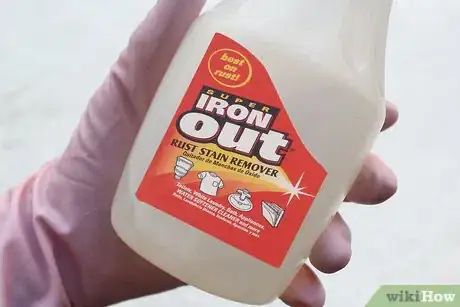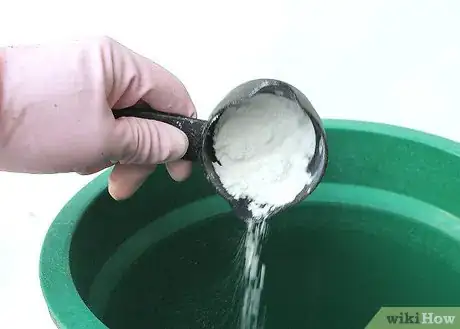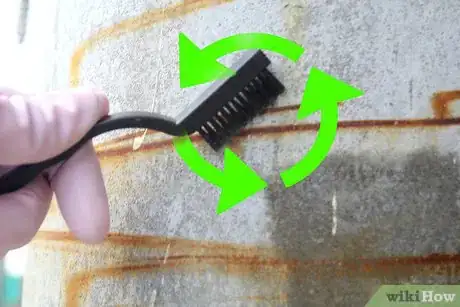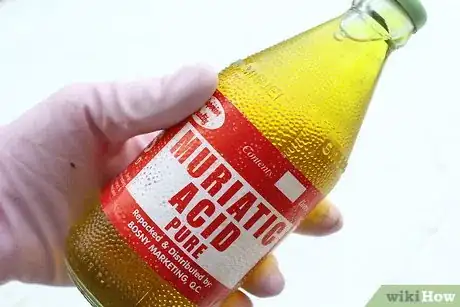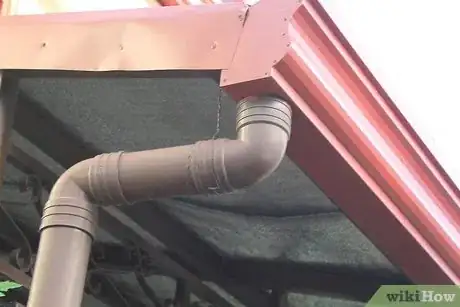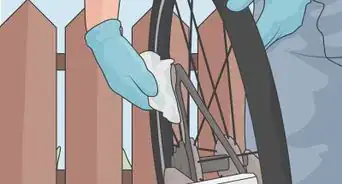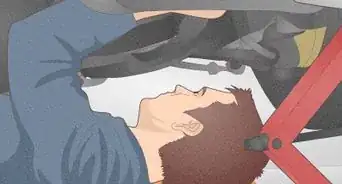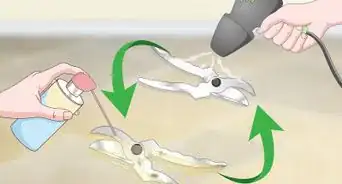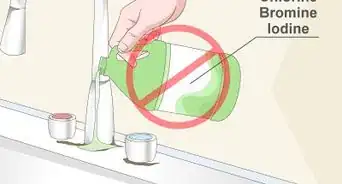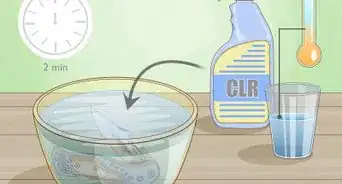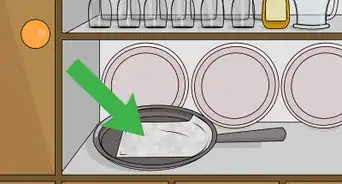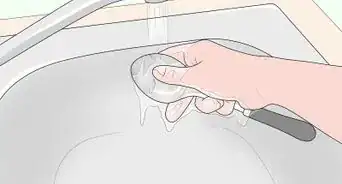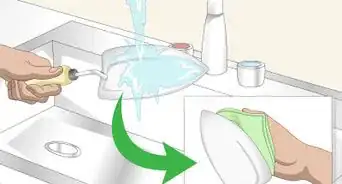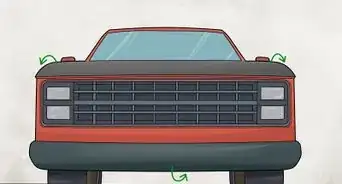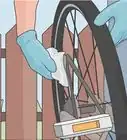wikiHow is a “wiki,” similar to Wikipedia, which means that many of our articles are co-written by multiple authors. To create this article, 19 people, some anonymous, worked to edit and improve it over time.
wikiHow marks an article as reader-approved once it receives enough positive feedback. In this case, 86% of readers who voted found the article helpful, earning it our reader-approved status.
This article has been viewed 644,531 times.
Learn more...
Rust stains on cement are a common problem for homeowners, especially those who use well water, as it is common for well water to contain high levels of iron. Such stains are difficult to prevent and can become an eyesore if not properly removed. Though you might not be able to completely remove stains that have been set in your years, you can greatly diminish them.
Things You Should Know
- Minor stains can be removed by scrubbing with diluted vinegar or lemon juice.
- For major stains, use commercial cleaners with oxalic acid, Trisodium Phosphate, hydrochloric acid, or a pressure washer.
- To prevent future rust, make sure to seal your concrete, avoid leaving metal on concrete, use non-corroding bars, and have your house inspected for leaks regularly.
Steps
Removing Minor Stains
-
1Rinse and wash the concrete with soap and water before beginning. Dirt and dust will just get between your cleaner and the stain, making your work less effective. Once you've cleaned the surface of the concrete you should let it dry before moving on.[1]
-
2Pour or spray lemon juice on the rusted surface. Almost all rust remover uses acid to lift and scrub away the stain, and the high concentration of citric acid in pure lemon juice makes it a worth-while cleaning candidate. Pour on the lemon juice and let it sit for 10 minutes before scrubbing with a wire brush.Advertisement
-
3Pour or spray white vinegar on the rusted surface in place of lemon juice for tougher stains. Let the vinegar sit for several minutes before scrubbing it with a wire brush. Rinse away the rust with some cold water and repeat for difficult stains.[2]
-
4Scrub the surface of the concrete with a brush. Let the lemon juice or vinegar sit for 5-10 minutes. Scrub the surface with a stiff bristled nylon brush if it is smooth or painted concrete. Work in small circles to remove as many of the rust stains as possible.
- Do not use metal bristles as they can remove the top paste layer in the cement and expose the aggregate material beneath this layer.
-
5Rinse off the concrete with cool water when you're finished. After rinsing, let the concrete dry. You may want to go after the stain again when you're done, as multiple washing is often the best way to fully remove rust stains.
-
6Use a sponge and diluted vinegar to scrub any delicate or painted surfaces. If you cannot use a wire brush without damaging the surface, stick to a sponge with some warm water. However, make sure that you test the cleaning product on a small corner of the concrete first -- many acids will strip or ruin the paint. Water down 1 cup of vinegar with 1/2 cup of water and start scrubbing in gentle circles. It may take 3-4 washes, but it will work over time.
Fighting Major Rust Stains
-
1Move on to commercial cleaners if vinegar and lemon juice don't work. For big, persistent stains you'll need to move on to the heavy-duty cleaners. Rinse off the concrete and let it dry before applying any of the following chemicals, and be sure to follow safety precautions:
- Work in a well-ventilated area.
- Wear gloves and eye protection.
- Stick to long sleeved shirts and pants to protect your skin.
-
2Use a cleaner that contains oxalic acid, such as Singerman's or F9 BARC. These sprays are often used to scrub sinks without scratching them, and they will quickly lift up rust stains.[3]
- They often come in liquid or powder form.
- Spray or sprinkle the cleaner on the rusted surface. If the cleaner is made of powder, wet it with water.
- Allow the mixture to sit for several minutes before continuing.[4]
-
3Use Trisodium Phosphate (TSP) to remove persistent rust from cement. Mix 1/2 cup (118.29 ml) of TSP with 1/2 gallon (1.89 L) of hot water. TSP can be purchased at a home improvement store, and needs to be mixed at home.
- Put on gloves before handling TSP.
- Pour the mixture on the rusted surface.
- Allow the mixture to sit for 15 to 20 minutes.
-
4Scrub the surface with a stiff bristled nylon brush and rinse after the cleaner sets in. Just like with your gentle stains, do not use metal bristles, as this can remove the top paste layer in the cement. Instead, us a stiff nylon brush and work in circles to lift up the stain. Rinse away all the cleaner when you're done, taking care to remove all of it. If left on the concrete for too long it may cause discoloration.
-
5Carefully consider hydrochloric acid to remove any stain. Hydrochloric acid, in some tests, is the most effective way to remove rust stains. However, left too long to soak this acid can tint your concrete blue, so you need to act quickly. Dilute the acid a bit with 1 cup of water for 2 cups of acid to give yourself more time and avoid re-coloring your surface; always mix acid to water to avoid a violent reaction.
- Let the acid soak into the stain for 5-10 minutes.
- Scrub away the rust stain, working quickly.
- Rinse the surface thoroughly with water.
- Repeat as needed.
-
6Use a pressure washer for hard to reach or tough stains. If you're having trouble getting to a stain, or can't scrub any harder, leave your acid on the stain for 10 minutes and set up a pressure water. The high-powered hose not only rinses away all the acid for you, it puts concentrated force on the stain to easily lift it off the surface.
Preventing Rust Stains
-
1Seal your concrete for the best protection against rust stains. Concrete sealer is applied like a stain on wood, and it soaks into the pores of the concrete and protects it from stains. You can get it at any home-improvement store. For the best results, reapply the sealer every 2-3 years:
- Choose a weekend with very little chance of rain to work.
- Wash the concrete and remove any existing stains.
- Starting in the corner, roll the sealant onto the concrete.
- Let the sealant sit for 48 hours before placing any furniture on it.[5]
-
2Avoid placing metal bottomed furniture directly on concrete. If you do need to, try and remove it during rainstorms. The number one cause of rust stains comes from outdoor metal furniture that gets wet, but this can be easily prevented with some forethought.[6]
- You can get felt runners, or outdoor carpets and mats, to protect your concrete as well.
- You can try coating your metal furniture with a sealant to prevent rust. You can also seal already rusted furniture to prevent the rust from spreading to your concrete.
- Even interior concrete can get rust stains if the room is moist or humid, so be aware of any metal to concrete interactions.
-
3Ensure that you have non-corroding bar supports when laying your concrete. Some stains come from within the concrete, as water gets to the metal support bars and causes rust stains from within the concrete. The best way to prevent this is to be proactive -- making sure you pay for and get non-corroding bars in your foundation.
-
4Have your house inspected for leaks. Moisture causes rust, so if you have stains on your interior concrete you should get an inspection to look for leaks. The sooner you close up the leak the better, as moisture can cause more damage then just a few easily cleaned stains.
Expert Q&A
Did you know you can get expert answers for this article?
Unlock expert answers by supporting wikiHow
-
QuestionHow can I prevent rust on cement that is in a garage?
 Mark SpelmanMark Spelman is a General Contractor based in Austin, Texas. With over 30 years of construction experience, Mark specializes in constructing interiors, project management, and project estimation. He has been a construction professional since 1987.
Mark SpelmanMark Spelman is a General Contractor based in Austin, Texas. With over 30 years of construction experience, Mark specializes in constructing interiors, project management, and project estimation. He has been a construction professional since 1987.
Construction Professional
-
QuestionI have 15,000 feet of sidewalk with iron oxide. Would it be a good idea to sandblast it?
 Community AnswerTo sandblast concrete, the likelihood is that you will remove the "paste" layer which is a result of a final troweling as the concrete is setting up. If the concrete surface is rough, like a broom finish, then you might consider sandblasting a small area to start with and then wait a week or so to see if the color and/or texture of the concrete changes. Sandblasting still may not remove the rust stains. If the concrete surface was hand or machine troweled for a finish, the odds are good that sandblasting will permanently change the finish and make it more susceptible to staining.
Community AnswerTo sandblast concrete, the likelihood is that you will remove the "paste" layer which is a result of a final troweling as the concrete is setting up. If the concrete surface is rough, like a broom finish, then you might consider sandblasting a small area to start with and then wait a week or so to see if the color and/or texture of the concrete changes. Sandblasting still may not remove the rust stains. If the concrete surface was hand or machine troweled for a finish, the odds are good that sandblasting will permanently change the finish and make it more susceptible to staining. -
QuestionHow can I remove motor oil that leaked onto my driveway?
 Community AnswerPut dry cement on the spot and leave in on a day or two. Kitty litter will also work.
Community AnswerPut dry cement on the spot and leave in on a day or two. Kitty litter will also work.
References
- ↑ https://www.doityourself.com/stry/removing-rust-stains-from-concrete
- ↑ https://www.doityourself.com/stry/removing-rust-stains-from-concrete
- ↑ http://www.goodhousekeeping.com/home/cleaning/q-and-a/a2580/remove-rust-concrete-oct01/
- ↑ http://www.goodhousekeeping.com/home/cleaning/q-and-a/a2580/remove-rust-concrete-oct01/
- ↑ http://www.kbs-coatings.com/concrete-sealer.html
- ↑ http://www.aldonchem.com/popup-ab-clean-rust.htm
About This Article
To remove minor rust from cement, pour lemon juice or white vinegar on the affected area and let it sit for 10 minutes. Then, scrub the area with a wire brush and rinse away the rust with cold water. For stubborn rust stains, apply a heavy-duty cleaner that contains oxalic acid or trisodium phosphate (TSP) and let it sit on the affected area for 15-20 minutes. Finish lifting the stain by scrubbing with a stiff bristled nylon brush, then rinse with cold water! For tips on preventing rust stains from developing on your concrete, read on!
